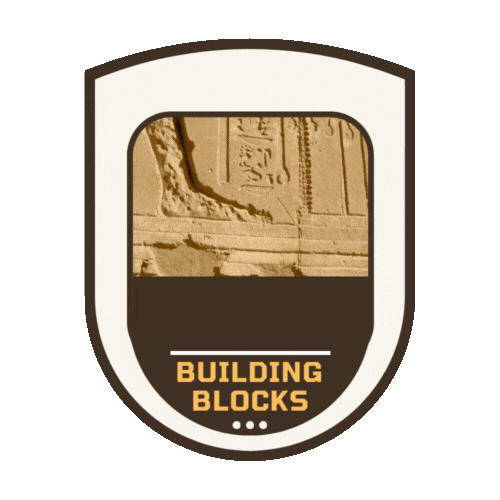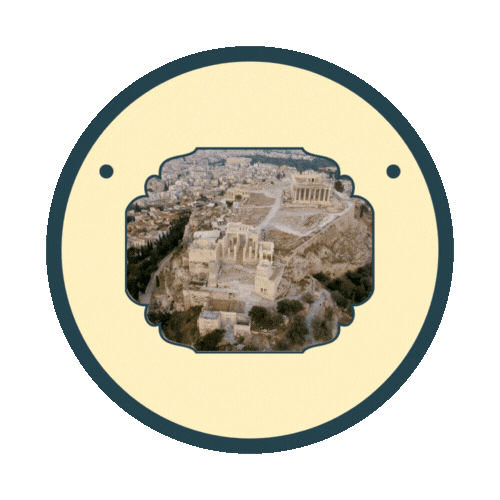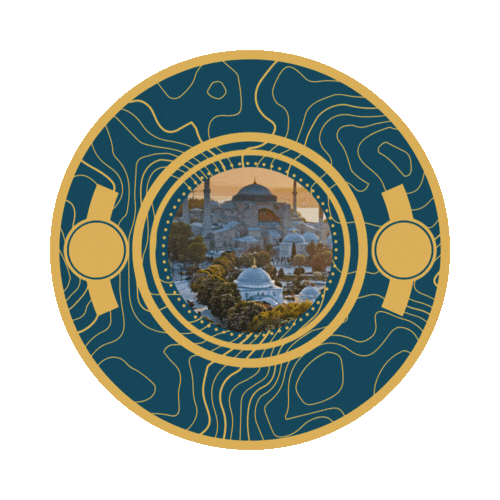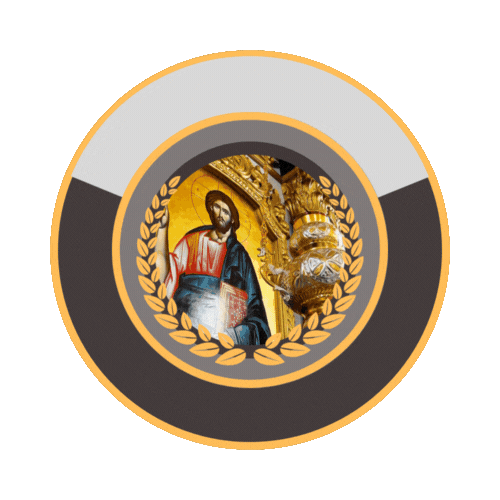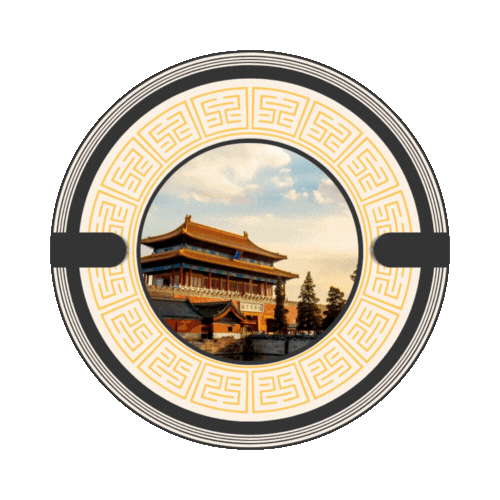
Civilizations
World History: Civilizations
Foundations That Shaped The World
Before modern nations and cities existed, people came together to form some of the world’s first civilizations. These early peoples organized societies with systems for government, religion, trade, education, and technology. These civilizations developed over thousands of years as people learned how to farm, build permanent homes, create laws, and work together in large groups.
In “Civilizations”, we’ll study how early humans stopped wandering and began settling in places with natural advantages, like rivers and fertile soil. You’ll learn how these environments helped civilizations grow and how features like writing systems, belief structures, and organized governments allowed people to cooperate, solve problems, and build powerful societies.
Our focus will include major early river valley civilizations, like Mesopotamia, Egypt, and Ancient China. We’ll also turn our attention to the rise of classical civilizations such as Greece, Rome, and Han China. You’ll explore the decisions their leaders made, the ideas they spread, the tools they invented, and the challenges they faced as they expanded and eventually declined.
As historians, we’ll ask big questions: How did geography affect where people settled? What made these civilizations succeed? Why did they eventually fall? And what lasting effects did they leave behind?
As we explore this unit, look for:
How geography and natural resources helped civilizations grow
What features (like government, religion, and technology) define a civilization
How trade, conquest, and ideas spread between civilizations
Why civilizations like the Han, Greek, and Roman Empires rose; and why they eventually fell
The lasting legacies these ancient cultures left behind that we still see today
By the end of “Civilizations”, you’ll understand how the world’s earliest civilizations formed, how geography influenced where people settled, and how humans began building organized societies. You’ll explore how these civilizations created systems for law, religion, trade, farming, and communication, and how these systems allowed large groups of people to live, work, and grow together.
You’ll also see how these ancient ideas and inventions continue to affect our world today. From the way we govern with laws and elected leaders, to how we build cities, measure time, write and record information, and even how we organize our communities and classrooms. Most importantly, you’ll begin to think like a historian: asking questions, looking for connections, and understanding how the past still shapes the choices we make in the present.
Civilizations: Digital Badges
Displaying Mastery throughout this unit will allow you to earn the following badges. Visit “The Builder’s Vault” for more details.
Navigation
01: Civilizations - Lesson Guide
-
-
01: "What Is History and Why Does It Matter?"
Learning Target: I can explain what history is, identify the difference between primary and secondary sources, and describe why studying the past helps us understand ourselves, learn from mistakes, explain the present, and make informed decisions as citizens.
Learning Target: I can explain what history is, identify the difference between primary and secondary sources, and describe why studying the past helps us understand ourselves, learn from mistakes, explain the present, and make informed decisions as citizens.
-
02: "What Makes a Civilization?"
Learning Target: I can identify and describe the key features that define a civilization - such as cities, government, writing, jobs, religion, art, and technology - and explain how these elements help people live, work, and grow together in organized societies.
Learning Target: I can identify and describe the key features that define a civilization - such as cities, government, writing, jobs, religion, art, and technology - and explain how these elements help people live, work, and grow together in organized societies.
-
03: Historical Thinking Skills - Cause, Effect, Chronology, & Comparison
Learning Target: I can use historical thinking skills - like understanding chronology, cause and effect, and comparison - to analyze past events and explain how they connect to the present.
Learning Target: I can use historical thinking skills - like understanding chronology, cause and effect, and comparison - to analyze past events and explain how they connect to the present.
-
04: The Traits of Timelines
Learning Target: I can use tools like timelines, charts, and guided questions to practice historical thinking skills - such as understanding chronology, cause and effect, and making comparisons - to explain how the past connects to the present.
Learning Target: I can use tools like timelines, charts, and guided questions to practice historical thinking skills - such as understanding chronology, cause and effect, and making comparisons - to explain how the past connects to the present.
-
05: Primary and Secondary Sources
Learning Target: I can analyze how early civilizations, like Mesopotamia, Egypt, the Indus Valley, and Ancient China, used writing, laws, technology, and city planning to build strong societies, and I can explain how historians use primary and secondary sources to understand the past.
Learning Target: I can analyze how early civilizations, like Mesopotamia, Egypt, the Indus Valley, and Ancient China, used writing, laws, technology, and city planning to build strong societies, and I can explain how historians use primary and secondary sources to understand the past.
-
06: Geography and the Environment
Learning Target: I can explain why early civilizations developed near rivers and describe how geography influenced their daily lives, culture, and growth in Mesopotamia, Egypt, the Indus Valley, and Ancient China.
Learning Target: I can explain why early civilizations developed near rivers and describe how geography influenced their daily lives, culture, and growth in Mesopotamia, Egypt, the Indus Valley, and Ancient China.
-
07: Comparing Early River Civilizations
Learning Target: I can describe how rivers supported the growth of early civilizations - like Mesopotamia, Egypt, the Indus Valley, and Ancient China - by providing water, fertile soil, transportation, and trade, and I can explain how geography shaped each civilization’s culture, government, and daily life.
Learning Target: I can describe how rivers supported the growth of early civilizations - like Mesopotamia, Egypt, the Indus Valley, and Ancient China - by providing water, fertile soil, transportation, and trade, and I can explain how geography shaped each civilization’s culture, government, and daily life.
-
08: Keeping Records and Creating Laws
Learning Target: I can explain how early writing systems and law codes - like cuneiform, hieroglyphics, and Hammurabi’s Code - helped ancient civilizations communicate, stay organized, and create fair societies, and I can describe how these innovations still influence us today.
Learning Target: I can explain how early writing systems and law codes - like cuneiform, hieroglyphics, and Hammurabi’s Code - helped ancient civilizations communicate, stay organized, and create fair societies, and I can describe how these innovations still influence us today.
-
09: Building Beliefs and Measuring Time
Learning Target: I can describe how ancient architecture and calendars - like pyramids, ziggurats, and early timekeeping systems - reflected the beliefs, values, and organization of early civilizations and helped them shape both their physical and spiritual worlds.
Learning Target: I can describe how ancient architecture and calendars - like pyramids, ziggurats, and early timekeeping systems - reflected the beliefs, values, and organization of early civilizations and helped them shape both their physical and spiritual worlds.
-
10: The Pillars of Early Civilizations
Learning Target: I can analyze how geography, innovation, and social organization shaped early civilizations, and explain how writing, law, architecture, and astronomy reflected both the achievements and inequalities of ancient societies.
Learning Target: I can analyze how geography, innovation, and social organization shaped early civilizations, and explain how writing, law, architecture, and astronomy reflected both the achievements and inequalities of ancient societies.
-
11: Civilization Simulation Project
Learning Target: I can apply what I’ve learned about ancient civilizations - such as geography, government, economy, religion, social structure, and technology - to design and explain a fictional civilization that shows how societies grow, survive, and thrive.
Learning Target: I can apply what I’ve learned about ancient civilizations - such as geography, government, economy, religion, social structure, and technology - to design and explain a fictional civilization that shows how societies grow, survive, and thrive.
-
12: Project Presentation - Civilization Gallery Walk
Learning Target: I can present and explain the key features of my group’s fictional civilization - based on real innovations from ancient Mesopotamia, Egypt, India, and China - and evaluate how geography, law, writing, and astronomy helped shape successful societies.
Learning Target: I can present and explain the key features of my group’s fictional civilization - based on real innovations from ancient Mesopotamia, Egypt, India, and China - and evaluate how geography, law, writing, and astronomy helped shape successful societies.
-
13: Geography & Greek City-States
Learning Target: I can explain how the geography of Ancient Greece - its mountains, coastlines, and seas - shaped the development of independent city-states and influenced their politics, economies, and cultures.
Learning Target: I can explain how the geography of Ancient Greece - its mountains, coastlines, and seas - shaped the development of independent city-states and influenced their politics, economies, and cultures.
-
14: Athens vs. Sparta: A Comparison of Government, Culture, and Lifestyle
Learning Target: I can compare and contrast the governments, values, daily life, and education systems of Athens and Sparta to understand how geography and beliefs shaped two very different Greek city-states.
Learning Target: I can compare and contrast the governments, values, daily life, and education systems of Athens and Sparta to understand how geography and beliefs shaped two very different Greek city-states.
-
15: The Birth of Democracy: Government in Athens
Learning Target: I can describe how Athenian democracy worked, explain who could participate, and analyze how the democratic ideas of Ancient Athens - especially during the Age of Pericles - influenced modern governments and ideas about citizenship.
Learning Target: I can describe how Athenian democracy worked, explain who could participate, and analyze how the democratic ideas of Ancient Athens - especially during the Age of Pericles - influenced modern governments and ideas about citizenship.
-
16: The Legacy of Ancient Greece
Learning Target: I can identify and explain at least three lasting contributions of Ancient Greece - such as democracy, philosophy, the Olympics, or architecture - and show how they continue to influence the modern world through a creative project.
Learning Target: I can identify and explain at least three lasting contributions of Ancient Greece - such as democracy, philosophy, the Olympics, or architecture - and show how they continue to influence the modern world through a creative project.
-
17: Project Presentation: The Legacy of Ancient Greece
Learning Target: I can present and explain my project on Ancient Greece’s lasting contributions, and I can evaluate my classmates’ work to deepen my understanding of how Greek ideas continue to influence the modern world.
Learning Target: I can present and explain my project on Ancient Greece’s lasting contributions, and I can evaluate my classmates’ work to deepen my understanding of how Greek ideas continue to influence the modern world.
-
18: The Power of Place: Geography and the Rise of Rome
Learning Target: I can explain how the geography of the Italian Peninsula helped Ancient Rome grow by providing resources, trade opportunities, and natural defenses that supported the rise of a powerful civilization.
Learning Target: I can explain how the geography of the Italian Peninsula helped Ancient Rome grow by providing resources, trade opportunities, and natural defenses that supported the rise of a powerful civilization.
-
19: Rome’s Blueprint: Comparing Ancient and Modern Governments
Learning Target: I can compare the government of the Roman Republic to the modern United States by identifying similarities and differences in voting rights, leadership, and how power was balanced among different groups.
Learning Target: I can compare the government of the Roman Republic to the modern United States by identifying similarities and differences in voting rights, leadership, and how power was balanced among different groups.
-
20: Power, Peace, and Politics: The Pax Romana Begins
Learning Target: I can explain how Rome changed from a republic to an empire by examining the roles of Julius Caesar and Augustus, and I can describe how this transformation impacted government, leadership, and the growth of Roman civilization.
Learning Target: I can explain how Rome changed from a republic to an empire by examining the roles of Julius Caesar and Augustus, and I can describe how this transformation impacted government, leadership, and the growth of Roman civilization.
-
21: The Legacy of Rome: Ideas and Achievements That Shaped Our World
Learning Target: I can explain how Ancient Rome’s geography, government, and cultural achievements helped it become a powerful empire, and I can identify ways Roman ideas and innovations continue to influence the modern world.
Learning Target: I can explain how Ancient Rome’s geography, government, and cultural achievements helped it become a powerful empire, and I can identify ways Roman ideas and innovations continue to influence the modern world.
-
22: The Origins and Beliefs of Major Religions
Learning Target: I can identify the origins, beliefs, and key figures of major world religions - Judaism, Hinduism, Buddhism, Confucianism, Daoism, Christianity, and Islam - and explain how these belief systems have influenced cultures, governments, and daily life throughout history.
Learning Target: I can identify the origins, beliefs, and key figures of major world religions - Judaism, Hinduism, Buddhism, Confucianism, Daoism, Christianity, and Islam - and explain how these belief systems have influenced cultures, governments, and daily life throughout history.
-
23: The Spread of Major Religions Across The Globe
Learning Target: I can explain how major world religions - Judaism, Hinduism, Buddhism, Confucianism, Daoism, Christianity, and Islam - spread beyond their places of origin through trade, migration, conquest, and cultural exchange, and describe how they influenced new regions and societies.
Learning Target: I can explain how major world religions - Judaism, Hinduism, Buddhism, Confucianism, Daoism, Christianity, and Islam - spread beyond their places of origin through trade, migration, conquest, and cultural exchange, and describe how they influenced new regions and societies.
-
24: Christianity in the Roman Empire
Learning Target: I can describe the life and teachings of Jesus, explain why Christianity spread during the Roman Empire, and analyze how early Christians practiced their faith despite challenges and persecution.
Learning Target: I can describe the life and teachings of Jesus, explain why Christianity spread during the Roman Empire, and analyze how early Christians practiced their faith despite challenges and persecution.
-
25: Constantine and the Legalization of Christianity
Learning Target: I can explain how Emperor Constantine’s actions, especially the Edict of Milan, helped legalize Christianity in the Roman Empire and describe why this was a major turning point in both Roman history and the spread of Christianity.
Learning Target: I can explain how Emperor Constantine’s actions, especially the Edict of Milan, helped legalize Christianity in the Roman Empire and describe why this was a major turning point in both Roman history and the spread of Christianity.
-
26: The Fall of Rome
Learning Target: I can identify and explain the major causes of the fall of the Western Roman Empire - including economic troubles, military decline, poor leadership, corruption, invasions, and geography - and analyze how these problems combined to bring down a powerful civilization.
Learning Target: I can identify and explain the major causes of the fall of the Western Roman Empire - including economic troubles, military decline, poor leadership, corruption, invasions, and geography - and analyze how these problems combined to bring down a powerful civilization.
-
27: Rome's Religious Shift and Lasting Legacy
Learning Target: I can explain how the Byzantine Empire preserved and transformed Roman traditions through Justinian’s Code, Christian architecture like the Hagia Sophia, and the spread of Christianity, and I can describe how these changes helped shape the future of religion, law, and culture.
Learning Target: I can explain how the Byzantine Empire preserved and transformed Roman traditions through Justinian’s Code, Christian architecture like the Hagia Sophia, and the spread of Christianity, and I can describe how these changes helped shape the future of religion, law, and culture.
-
28: Geography's Influence on The Han Dynasty
Learning Target: I can explain how the geography of ancient China - including rivers, mountains, deserts, and trade routes - supported the Han Dynasty’s success in farming, protection, trade, and government control, and how location helped the empire grow and connect with other civilizations.
Learning Target: I can explain how the geography of ancient China - including rivers, mountains, deserts, and trade routes - supported the Han Dynasty’s success in farming, protection, trade, and government control, and how location helped the empire grow and connect with other civilizations.
-
29: Mandate and Morals: How Confucianism Shaped Han Rule
Learning Target: I can explain how Confucianism influenced the Han government, and how Emperor Wu’s use of civil service exams created a fairer system for choosing leaders based on knowledge and ability instead of family background.
Learning Target: I can explain how Confucianism influenced the Han government, and how Emperor Wu’s use of civil service exams created a fairer system for choosing leaders based on knowledge and ability instead of family background.
-
30: Beyond Silk: How the Han Dynasty Created The World's First Superhighway
Learning Target: I can explain how the Silk Road connected the Han Dynasty to other civilizations through trade, cultural exchange, and the spread of goods, ideas, religions, and diseases, and how this network impacted daily life and global history.
Learning Target: I can explain how the Silk Road connected the Han Dynasty to other civilizations through trade, cultural exchange, and the spread of goods, ideas, religions, and diseases, and how this network impacted daily life and global history.
-
31: Tools, Trade, and Traditions: Inside Han Dynasty Homes
Learning Target: I can describe what daily life was like during the Han Dynasty by explaining how Confucian values, inventions, and trade along the Silk Road influenced family life, social structure, and everyday activities in ancient China.
Learning Target: I can describe what daily life was like during the Han Dynasty by explaining how Confucian values, inventions, and trade along the Silk Road influenced family life, social structure, and everyday activities in ancient China.
-
32: Rebellion, Corruption, and Collapse: The End of the Han Dynasty
Learning Target: I can explain the causes of the Han Dynasty’s fall - including government corruption, land inequality, rebellion, natural disasters, and military conflict - and describe how its collapse led to the Three Kingdoms Period and left lasting lessons about leadership and fairness.
Learning Target: I can explain the causes of the Han Dynasty’s fall - including government corruption, land inequality, rebellion, natural disasters, and military conflict - and describe how its collapse led to the Three Kingdoms Period and left lasting lessons about leadership and fairness.
-
